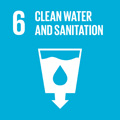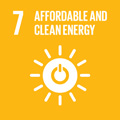- Docente: Laura Tositti
- Credits: 6
- SSD: CHIM/12
- Language: Italian
- Teaching Mode: Traditional lectures
- Campus: Bologna
- Corso: First cycle degree programme (L) in Chemistry and Materials Chemistry (cod. 8006)
-
from Feb 20, 2025 to May 29, 2025
Learning outcomes
At the end of the course the student will be capable to recognise contaminants and pollutants in the various environmental compartments (air, water, soil, biota) according to the present regulations including the standardized methodologies required by the regulation themselves.
Sources of pollution and environmental fate concept will be addressed
Practical advice about how to sample and analyse environmental matrices in order to obtain the maximum compositional/environmental information will be given
Course contents
Purpose and scope of environmental legislation
European environmental legislation
Concept of pollutant, contaminant and environmental background (natural and non-natural)
Conservative and non-conservative chemical species
Environmental residence time
Environmental fate of pollutants - role of fluids (air and water)
Air pollutants, in the hydrosphere, in the soil, in the biosphere, in sediments
Analytical requirements in the environmental field (concept of environmental matrix, detection and quantification limits, practical precautions in the laboratory). Representation of the environmental sample - Types of datasets - spot samples, time series samples
The concept of environmental monitoring
relationships between ECHAM and REACH, their relationships with environment and health
Historical and contemporary pollutants: relationship between ancient and modern technologies
Integrated methodologies for studying pollution phenomena
Readings/Bibliography
Slides provided by the teacher
Reviews and articles from scientific journals
Titolo del Libro: Chimica ambientale
Autori : Colin Baird Michael Cann Lanciotti
Editore: Zanichelli
Edizione: 3° (2013)
Teaching methods
frontal lessons and individual study
Assessment methods
Oral exam split as follows:
1) oral presentation of a powerpoint (5-6 slides) on a topic covered by the course based on a recent scientific article agreed with the teacher
2) two questions on the program of the course
Teaching tools
powerpoint slides by the teacher
case studies treated by the teacher
Office hours
See the website of Laura Tositti
SDGs




This teaching activity contributes to the achievement of the Sustainable Development Goals of the UN 2030 Agenda.
